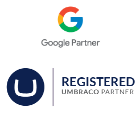In our previous instalment, we looked at how the health of your business can be shaped by your past experiences. For Scrooge, that journey was a relatively mild reminder of the mistakes he had made, but for you it can be a much stronger gauge of the direction your business has (or hasn’t) taken.
Scrooge’s next journey with The Ghost of Christmas Present is much more impactful. He’s led through the streets by an affable, jolly figure who only reveals the stark reality of Scrooge’s life at the end.
Dickens intended this to be an allegorical lesson about the class divide in society and treatment of the poor which is personified in Scrooge’s humanity (or lack thereof). We can draw business lessons from this too - after all, people are at the core of every business.
Complacency is costly
Scrooge had a narrow vision of the world around him and that gave him enough comfort to become increasingly ignorant of the problems that were right under his nose. He was complacent and that cost him.
How much is your complacency costing your business?
It’s easy for any business to fall into autopilot mode and allow the months and years to pass by. It’s not through ill-intention or ignorance, but simply that your focus and priorities have shifted over time. Complacency is a lack of direction and can be a terminal sickness for a business.
Symptoms of a sick business
A jolly giant isn’t going to visit you in the night and point out all of your problems - you need to figure that out for yourself. This can be difficult, as there won’t be a clear issue to resolve. Instead, you will have to identify the symptoms...
Your to-do list never shrinks
One of the main symptoms of a sick business is that stuff just doesn’t get done. Sure, the day to day operation of the company might be ticking along, but the “next step” stuff that’s always in the back of your mind never sees the light of day. See that task dated 3 years ago? Yeh, that.

Competitor envy
Markets evolve as new competitors enter or existing competitors up their game. If your business is stagnating, then one day you will begin to notice that your competitors just seem better. How is your brand perceived by your staff and competitors? Are you being left behind?
Never good enough
If there’s a feeling that ‘things aren’t quite good enough’ within your organisation, it can be a sign that you have problems. Setting goals and aiming high are good things, but if your expectations are unattainable it can lead to frustration. Being able to look at what you have right now and see the value in it is a key skill for any leader.
People are leaving
A particular problem for small to mid sized companies that are trying to expand. Failing to retain staff means higher recruitment costs, more time spent onboarding new staff and slower growth. For some companies that can be the difference between success and failure.
Meeting overload
Meetings are useful. Sometimes you just need to sit around a table and make some decisions. But if your staff are having meeting after meeting and there is a sense that progress isn’t being made, then that’s a problem. A lack of focus from those who are leading can end up wasting the time of those who are following.
Your seal of approval
You might think your sign off on everything is important, but if you need to rubber stamp every task before your team can get on with their jobs, then you’re the problem. This turns simple tasks into a source of frustration and ends up draining time and willpower from your team.
What do all of these symptoms have in common?
They represent a lack of direction. They are a consequence of losing sight of what is important - where you came from and where you want to go.
The allure of the present is its ease, its simplicity. It becomes the default setting.
It’s difficult to hold on to your past idealistic notions of running a business when you have to deal with the present reality of keeping things going. It’s difficult to work towards future aspirations when they are far off and the present is asking you to pay bills and protect jobs.
The present is easy. It’s simple. It’s safe. It’s manageable. It might not always be a jolly giant showing you a rose-tinted view of Christmas, but at least it’s not wistful regrets or embracing your eventual mortality, right?
Scrooge was complacent. He constructed a comfort zone around him that meant he had no reason to challenge his perception of the world. It took an otherworldly spirit to force him to change.
You are the agent of change
As a leader, it’s your responsibility to drive change and encourage your team to embrace it, and a good starting point for this is to share with them your story and help them become a part of it.
We discussed this idea in the previous post, but a good way to go about this is to consider your values - the reasons you started your business - and reflect on how well those values are being realised. What were your expectations starting out, what have you learned along the way and how far have you come?
These are great starting points that naturally lead on to a conversation about what’s still relevant to your business and what the future holds.
If complacency is affecting your business, then simply waiting for something to happen that might spark change is the wrong thing to do.
Change is a step into the unknown, but by taking small steps and properly planning it is easy. It’s simple. It’s safe. It’s manageable.
With a simple shift in mindset, it can become the default position.
Here’s what you need to do
In our last post, we asked you to write down your early motivations for starting your business. What wins did you have and what did you set out to achieve?
The next step from here is to think about where you are at just now. How does that compare to where you expected to be? What aspirations have you put behind you and which do you still hold on to?
Then consider your strengths just now. Is it your brand, your product, your team? What sets you apart from your competitors? What are you proud of?
Marketing agencies have a million and one different ways of managing this process for clients, but it boils down to understanding what those core aspects of your business are. These are the foundation that can later be built on.





